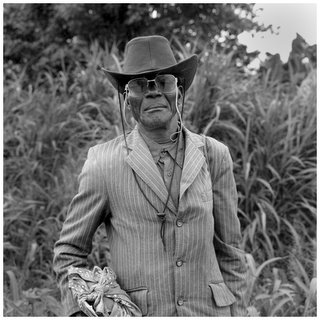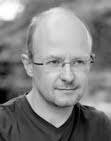The Rollei still rocks
 So I am back from an adventurous trip through West-African Gabon. After our workshop in the isolated town of Gamba, we explored the western part of the country in an 800 km jeep ride which brought us to via Mayumba, Tchibanga, Mouila and Lambaréné to the capital Libreville.
So I am back from an adventurous trip through West-African Gabon. After our workshop in the isolated town of Gamba, we explored the western part of the country in an 800 km jeep ride which brought us to via Mayumba, Tchibanga, Mouila and Lambaréné to the capital Libreville.The adventurous part was only partly due to the horrible condition of the roads at the beginning of the rainy season. In fact we were duped by a countryman of ours, who was responsible for the organisation of the trip. His jeep - a 30 year old, beaten Land Rover - kept breaking down and as early as Tchibanga the guy disappeared (with our money). Left to our own devices, we switched to a taxi brousse to cover the remaining 500 kilometer to Libreville.
During the whole trip I clutched my camera bag as a little baby (our Gabonese driver called it mockingly my "bagage fétish"). I just took my trusted Rolleiflex 3.5F and 20 rolls of Efke/Adox 100. The camera works wonderfully on these kinds of rough trips. It is compact and sturdy. And with its large, luminous Maxwell Hi-lux screen it is a great pleasure to work with. Perhaps its greatest asset is the fact that as a photographer you do not disappear behind your camera. Hence it is much easier to stay in contact with your subject and keep them at ease whilst you are focusing and composing a shot.
The Rolleiflex is often considered a stand-alone camera. But it is actually more adaptable than you might think. I really like the Rolleinar close-up lenses which allow for great flexibility at close distances (I had two with me on the Gabon trip). If you are lucky enough to find a Mutar 0.7x or 1.5x tele-converter, you can turn your Rollei into a wide-angle or telephoto camera at a moment's notice. There is a host of other interesting accessories, such as filters, prisms, film format converters (Rolleikin), etc. So, although it falls short of being a real system camera, the Rolleiflex TLR really is more versatile than it looks.
I have two Rolleiflex cameras: a 3.5F with a Carl Zeiss Planar lens and a grey Baby Rollei with a Schneider Kreuznach Xenar. The latter works with 127 fim - again available from Efke - and yields 4x4 negatives. For a short while I worked with the newer 2.8GX but, despite its built-in light meter and more luminous lens, I really prefer the older 3.5F.
The picture above was taken in Tchibanga, Gabon, with the Rolleiflex 3.5F on Adox/Efke 100.


1 Comments:
I'd love to see more from your trip with your Rollei. They seem to convey an atmosphere of dignity to their subjects. The square is nice.
http://dlridings.se/blog
Daniel
By Daniel L. Ridings, at 3:46 PM
Daniel L. Ridings, at 3:46 PM
Post a Comment
<< Home